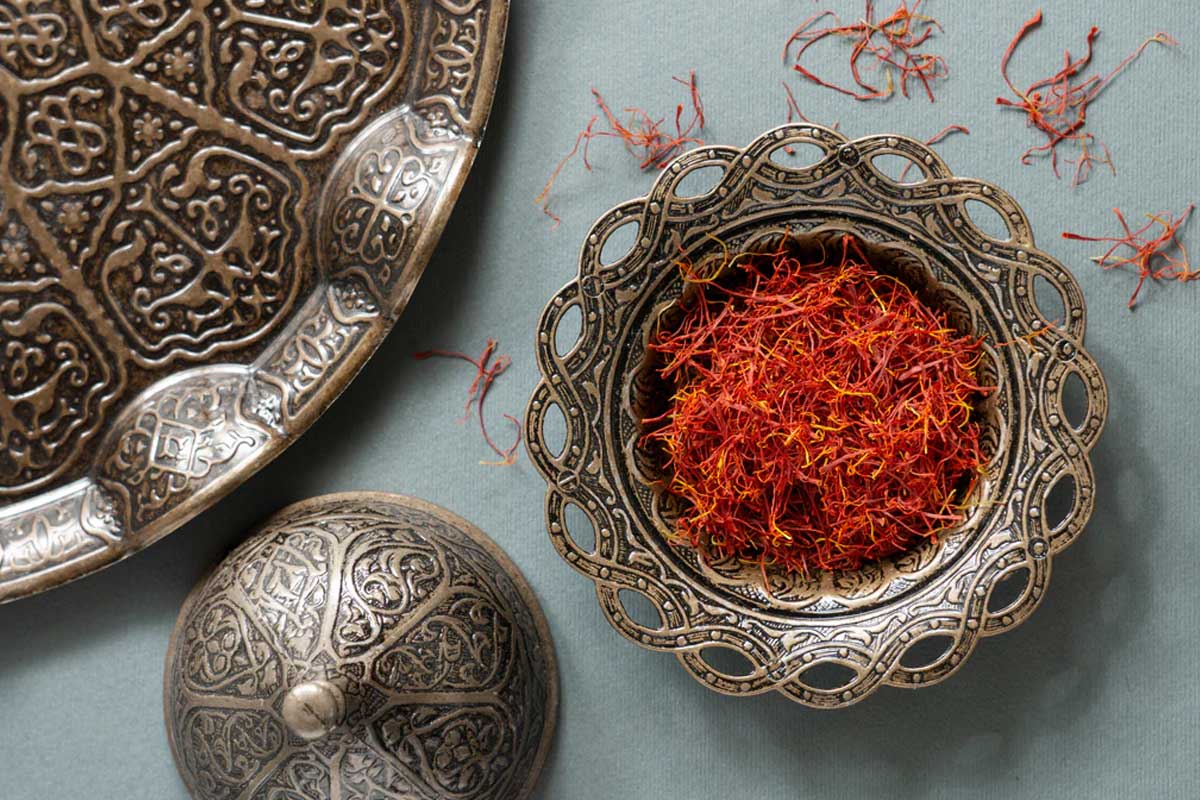Free Express International Delivery & Easy Returns
Free Express International Delivery & Easy Returns
Saffron: A Symbol of Luxury and Prestige Throughout History

Saffron, often referred to as the “king of spices” or the “red gold,” has been revered as a symbol of luxury, prestige, and prosperity throughout history. Its vibrant color, unique flavor, and exotic aroma have captivated cultures around the world, making it one of the most prized and sought-after spices. Let’s delve into the rich tapestry of saffron’s history and its enduring legacy as a symbol of opulence and prestige.
The history of saffron dates back to antiquity, with evidence of its use found in ancient civilizations such as Egypt, Greece, Persia, and China. Saffron was valued for its rarity and exclusivity, making it a status symbol reserved for royalty, nobility, and elites. In ancient Persia, saffron was associated with the divine and was used in royal feasts, banquets, and ceremonies to signify wealth and power. Persian kings and emperors adorned themselves with saffron-infused perfumes and oils, further elevating its status as a luxury commodity.
During the Middle Ages, saffron became a highly prized commodity in trade networks stretching from the Mediterranean to Asia. The Silk Road, a vast network of trade routes connecting East and West, facilitated the exchange of saffron along with other goods, spices, and luxury items. Saffron was traded at premium prices and was considered more valuable than gold by weight. Merchants and traders competed fiercely for control of saffron markets, leading to the establishment of saffron-growing regions in Europe, particularly in Spain and Italy.
In the Renaissance era, saffron enjoyed a resurgence in popularity as a symbol of refinement and sophistication. The courts of Europe, including those of France, Italy, and England, indulged in lavish banquets and sumptuous feasts featuring exotic dishes flavored with saffron. Saffron-infused desserts, confections, and liqueurs became fashionable among the aristocracy, further cementing its status as a luxury ingredient. Renaissance artists, including Leonardo da Vinci and Michelangelo, depicted saffron in their paintings as a symbol of wealth and abundance.
During the Age of Exploration, European colonial powers sought to control saffron-producing regions in Asia and the Middle East to gain access to this valuable commodity. The Spanish conquest of the New World introduced saffron cultivation to regions such as Mexico and Peru, further expanding its global influence. Saffron became synonymous with luxury and prestige in colonial societies, where it was used in religious ceremonies, royal courts, and colonial administration.
In the modern era, saffron continues to be revered as a symbol of luxury and prestige in culinary circles around the world. Chefs and food enthusiasts prize saffron for its ability to impart color, flavor, and aroma to a wide range of dishes, from savory paellas and risottos to delicate desserts and pastries. Saffron-infused creations are featured in Michelin-starred restaurants and gourmet establishments, where they command premium prices and elicit admiration from discerning diners.
Conclusion
Saffron’s status as a symbol of luxury and prestige throughout history is a testament to its enduring allure and exceptional qualities. From ancient civilizations to modern-day culinary delights, saffron has captivated the senses and inspired admiration among cultures and epochs. Its vibrant color, unique flavor, and exotic aroma continue to evoke feelings of opulence, refinement, and indulgence, ensuring its place as one of the most cherished and coveted spices in the world.
Copyright © 2024 Zaflore.